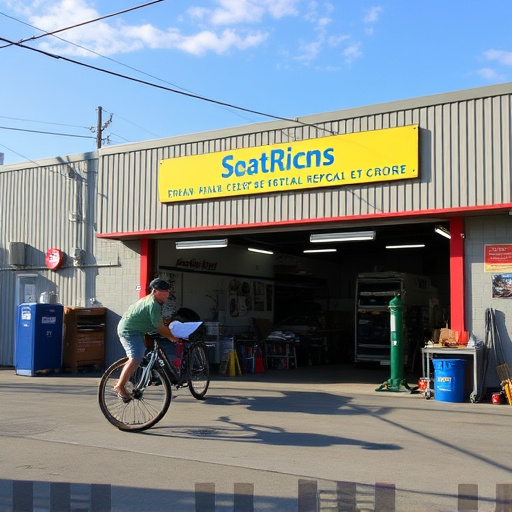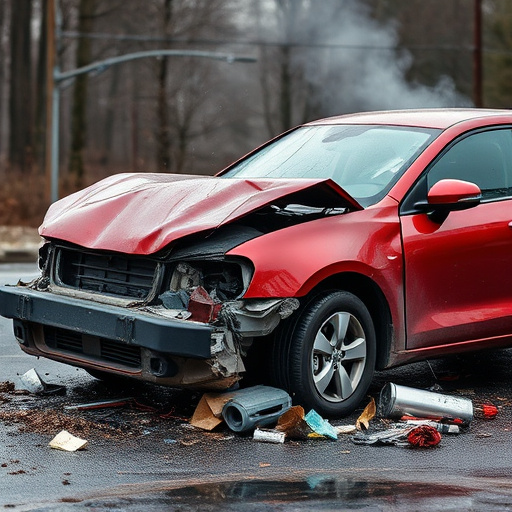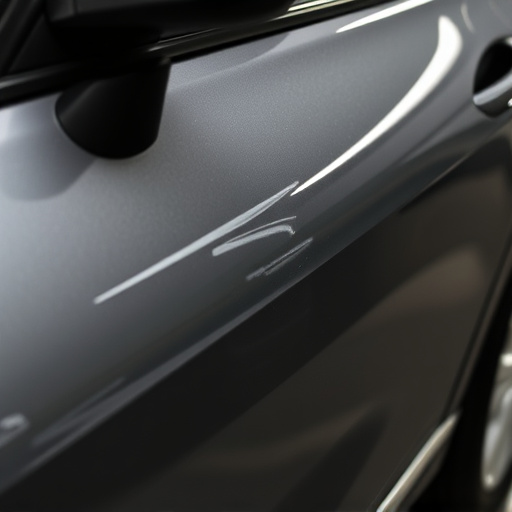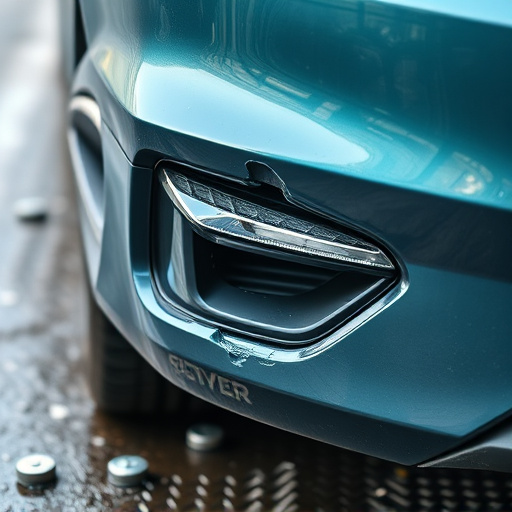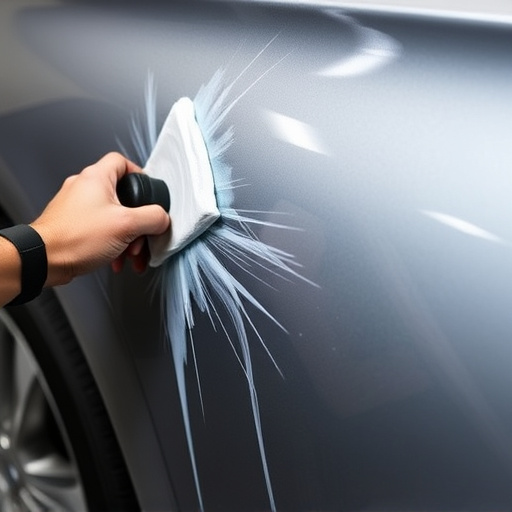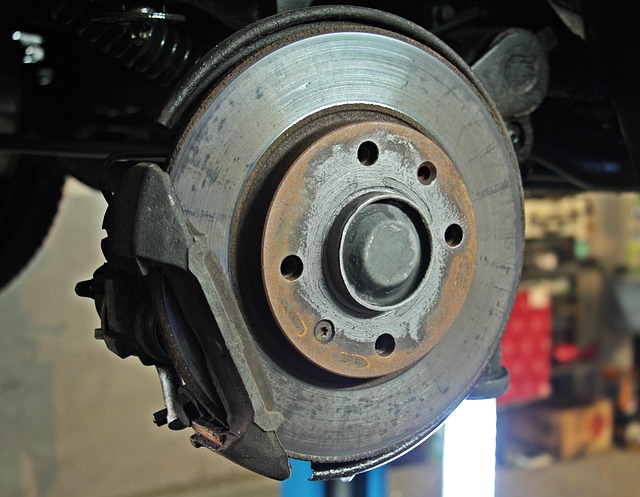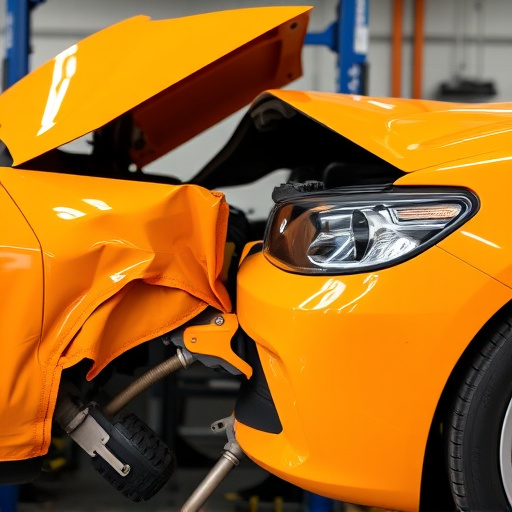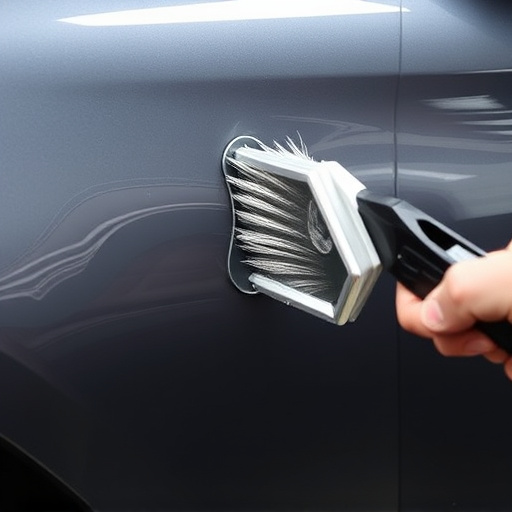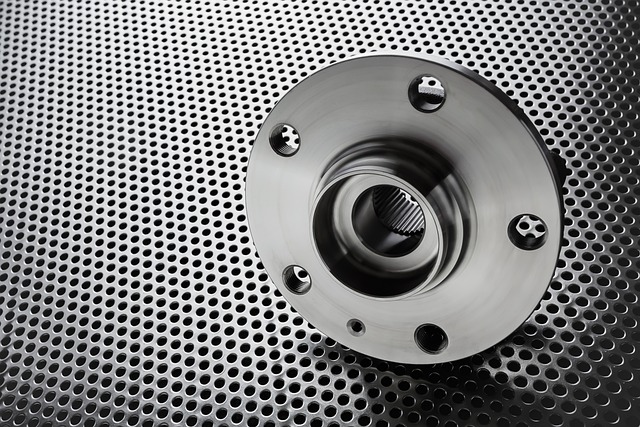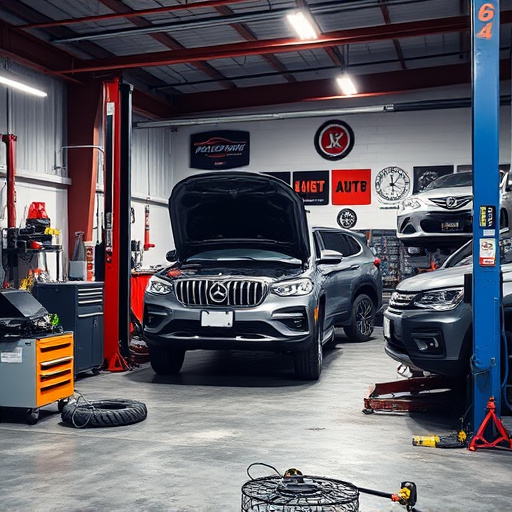Modern vehicles' lightweight aluminum body components are susceptible to dents and deformities, requiring specialized repair techniques. Paintless dent repair (PDR) is a popular, efficient method to restore their original appearance without extensive repainting. The meticulous process involves inspection, dismantling, straightening damaged surfaces, precision welding, and careful color matching painting. Regular maintenance, including waxing, prompt repairs, protective covers, and washing, is crucial to prevent future damage and save costs.
Aluminum body components are increasingly popular in automotive construction due to their lightweight nature and durability. However, these components are not immune to damage from impacts, corrosion, or wear. Understanding how to correctly repair aluminum body panels is essential for maintaining vehicle integrity and aesthetics. This article guides you through the process of repairing aluminum body components, offering insights into common issues, step-by-step repair techniques, and preventive measures to keep your aluminum structures in top condition.
- Understanding Aluminum Body Components and Common Damage
- Steps for Effective Repair of Aluminum Body Components
- Tips for Preventing Future Damage to Aluminum Body Components
Understanding Aluminum Body Components and Common Damage
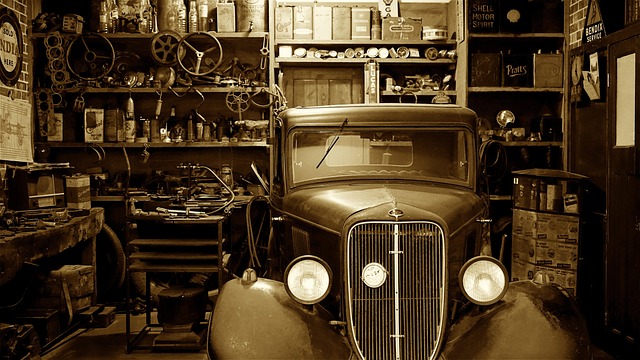
Aluminum body components have become increasingly common in modern vehicle construction due to their lightweight nature and superior strength-to-weight ratio. These components, found in various parts of a car, from fenders and doors to hoods and even chassis parts, play a crucial role in enhancing fuel efficiency and overall vehicle performance. However, like any other material, aluminum is susceptible to damage. Common issues include dents, scratches, dings, and even more severe deformities caused by car collisions or accidental impacts.
Understanding the unique properties of aluminum is essential when repairing such damage. Unlike steel, aluminum does not bend easily and has a tendency to dent and deform without leaving visible creases. This characteristic can make traditional car paint services less effective for repairing some types of aluminum damage. Instead, specialized techniques like paintless dent repair have gained popularity as an efficient and cost-effective solution, allowing technicians to restore the original appearance of aluminum body components without extensive repainting or mechanical alterations.
Steps for Effective Repair of Aluminum Body Components

The effective repair of aluminum body components requires a meticulous approach to ensure structural integrity and aesthetic quality. It starts with a thorough inspection to identify the extent of damage, including dents, creases, or cracks. Using specialized tools like impact wrenches and hand tools, the damaged area is carefully dismantled, allowing access to hidden or internal components. Next, the cleaned and prepared surface undergoes a process known as metal straightening, which can involve methods such as air hammering or hydraulic presses to return the aluminum to its original shape.
After the body has been restored to its pre-damaged state, skilled technicians apply precision welding techniques tailored for aluminum. This involves using specialized welding rods and precise heat application to fuse the metal seamlessly. For vehicle dent repair, methods like PDR (Paintless Dent Repair) can be employed, which avoids painting by gently pushing out dents from the inside, preserving the original factory finish. Finally, a meticulous painting process ensures color matching and a seamless blend with the rest of the vehicle, completing the car body restoration.
Tips for Preventing Future Damage to Aluminum Body Components

To prevent future damage to aluminum body components, regular maintenance is key. Start by keeping your vehicle clean and protected with a high-quality wax or sealant. This not only shields the metal from harsh weather conditions but also repels dirt and debris that could lead to oxidation or corrosion. Additionally, inspect your car for any signs of wear and tear, such as small dents or scratches, and address them promptly at an auto body shop specializing in aluminum repair. Timely dent removal can prevent deeper damage and maintain the integrity of your aluminum body components.
Furthermore, be mindful of storage conditions if you park your vehicle outdoors. Covering it with a protective tarp and parking in a shaded area can significantly reduce exposure to UV rays that contribute to metal degradation. Regular washing and detailing not only enhance the aesthetic appeal but also play a vital role in preserving the aluminum body components’ longevity. Remember, preventing damage is often more cost-effective than repairing extensive corrosion or structural issues later on at an auto repair shop.
Repairs to aluminum body components, when done correctly, can extend the lifespan of vehicles and preserve their structural integrity. By understanding common damage types and implementing effective repair methods, car owners can ensure these essential parts remain in top condition. Additionally, proactive measures like regular maintenance and protection from environmental factors can significantly prevent future damage to aluminum body components.
